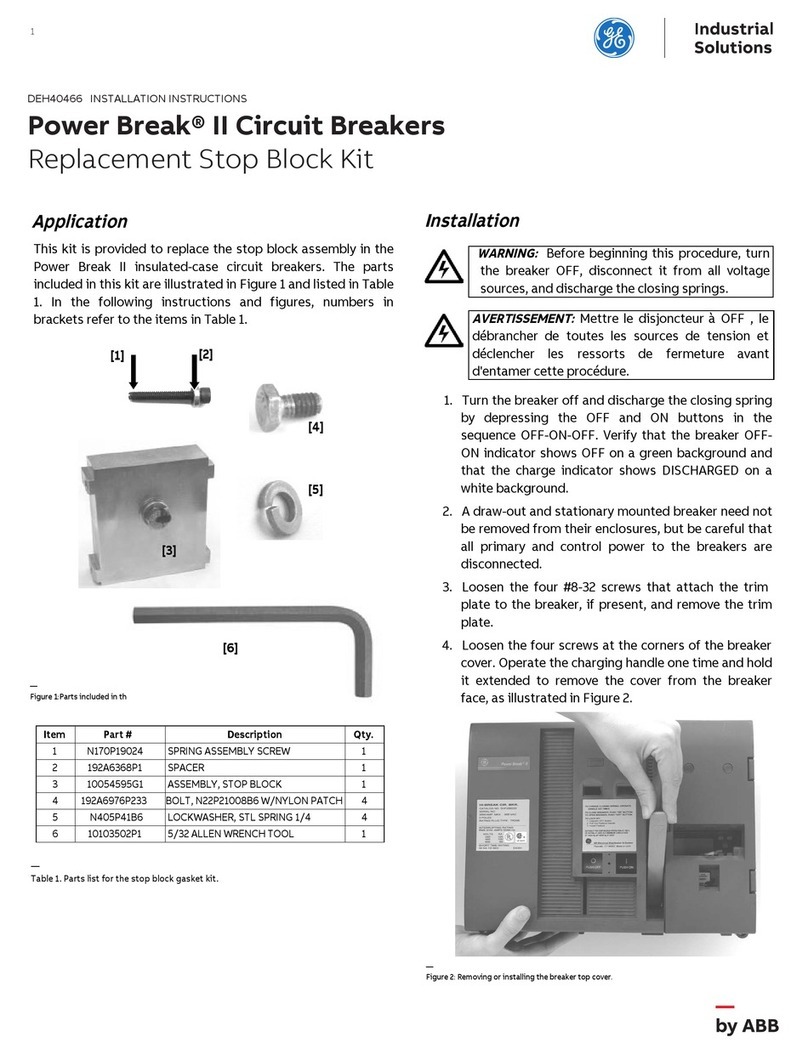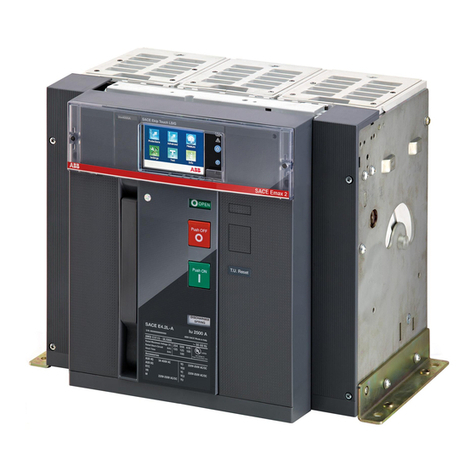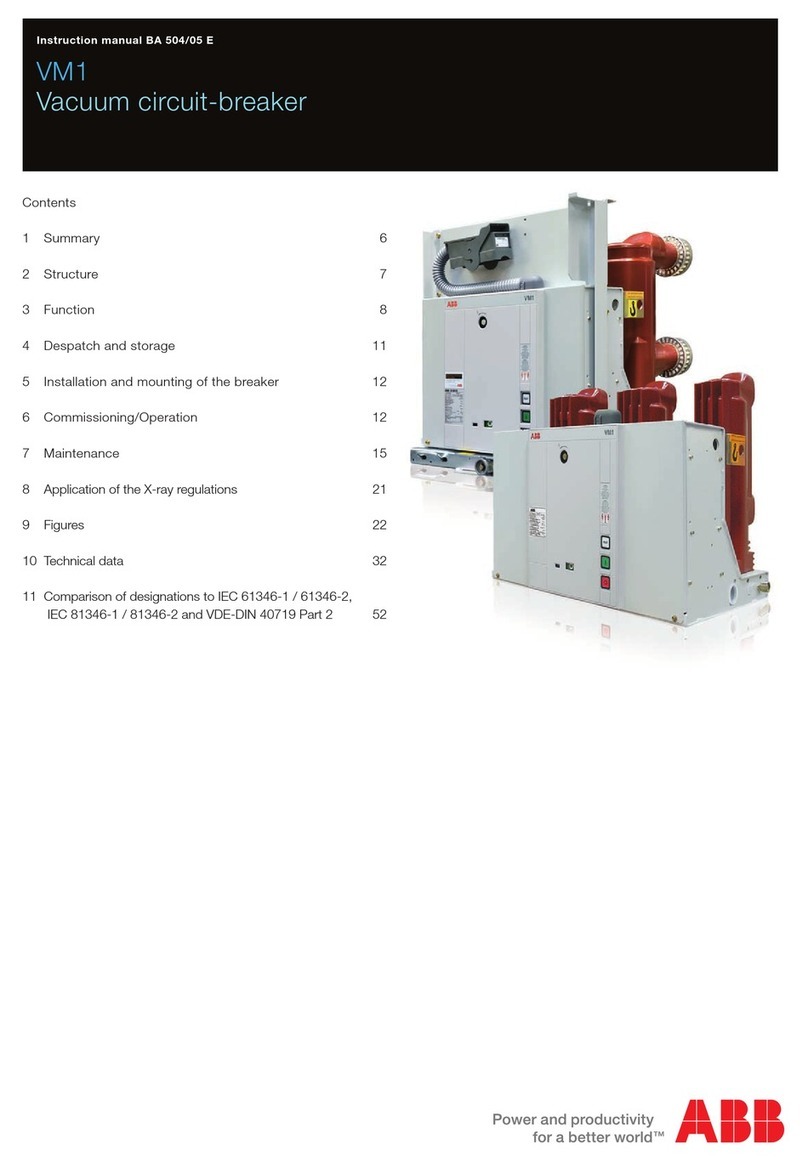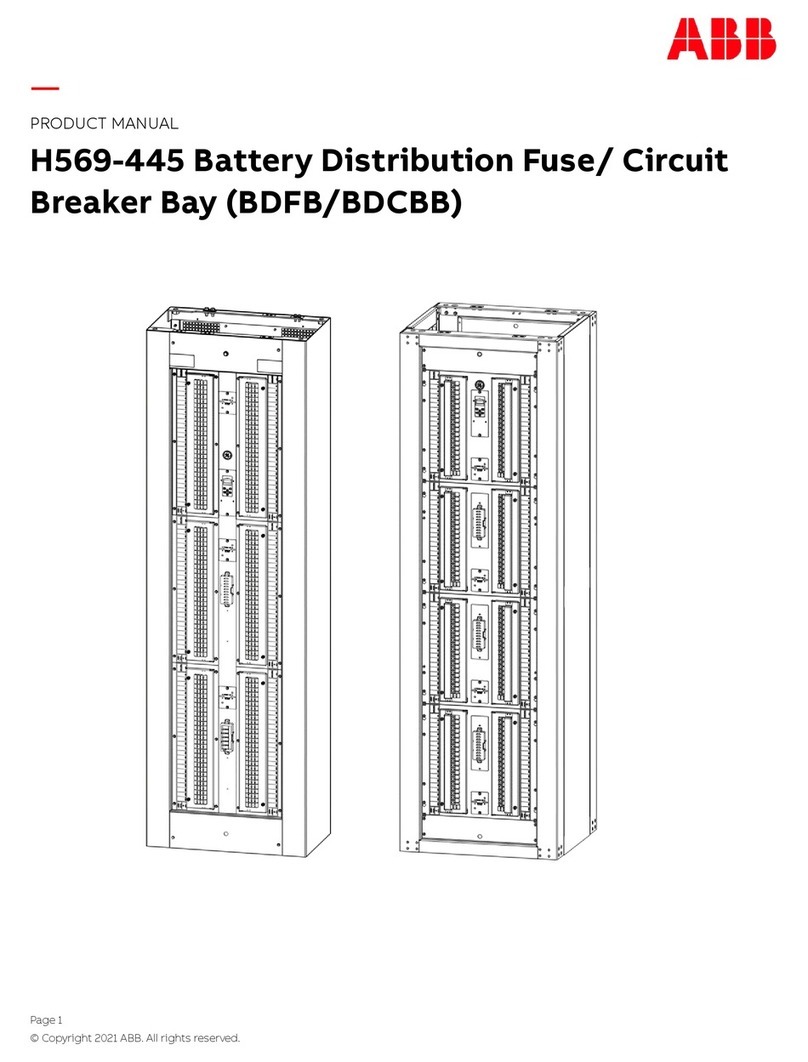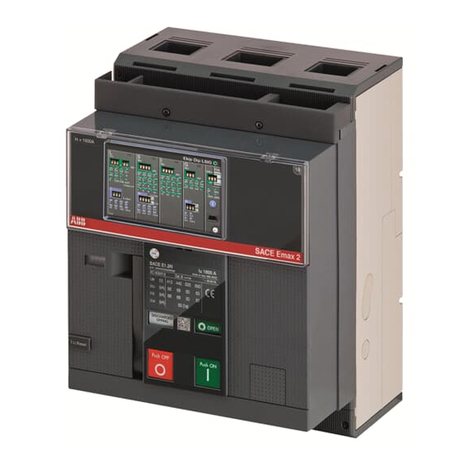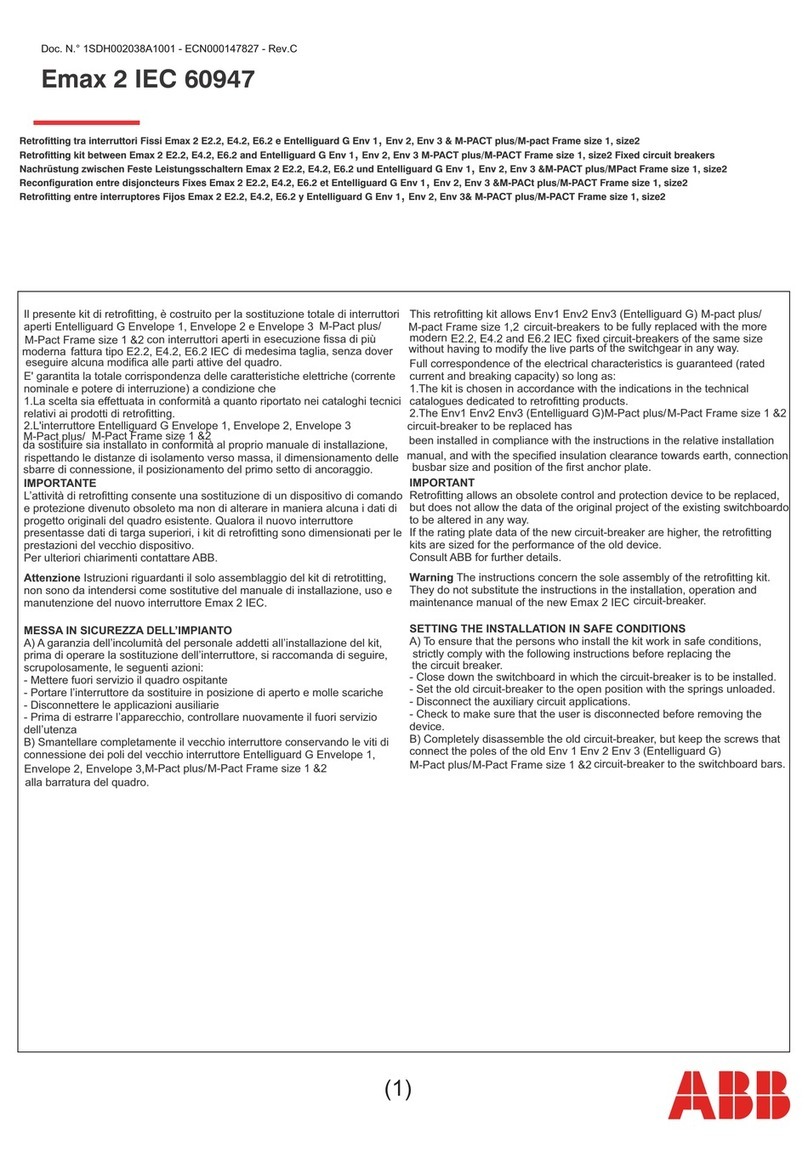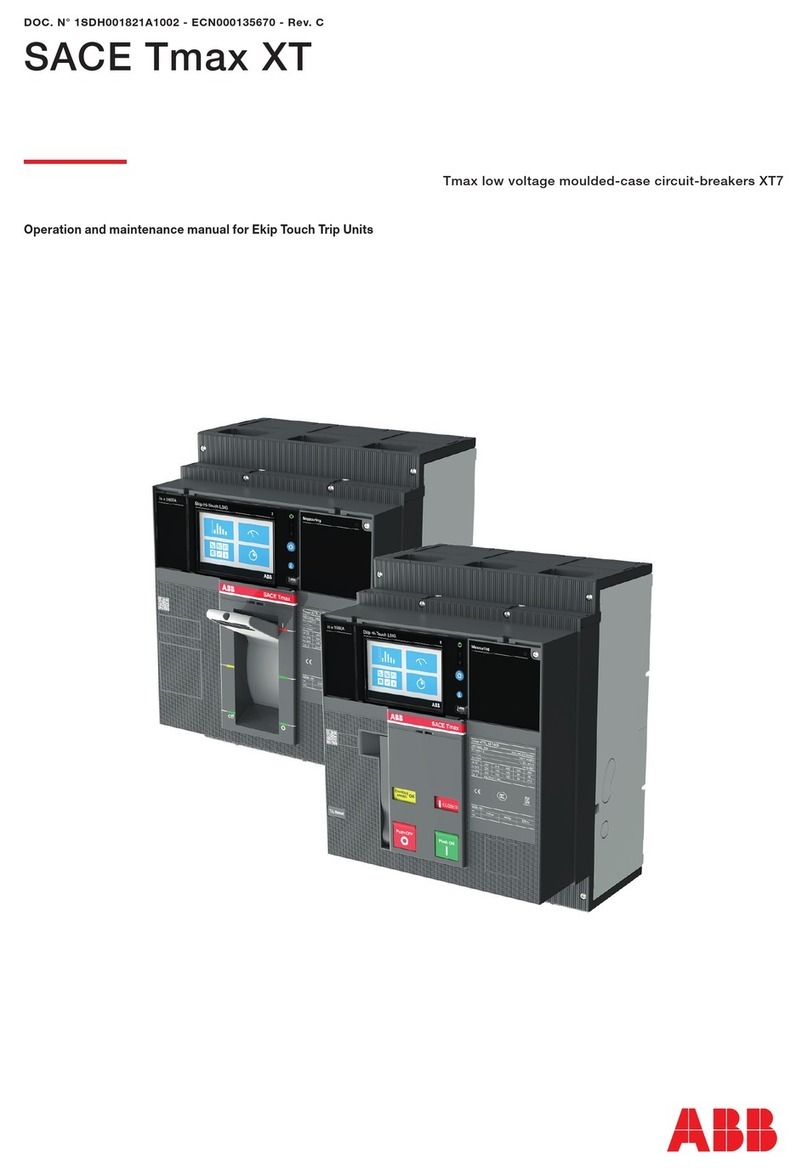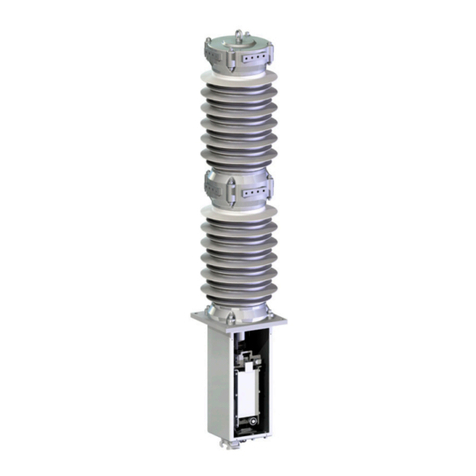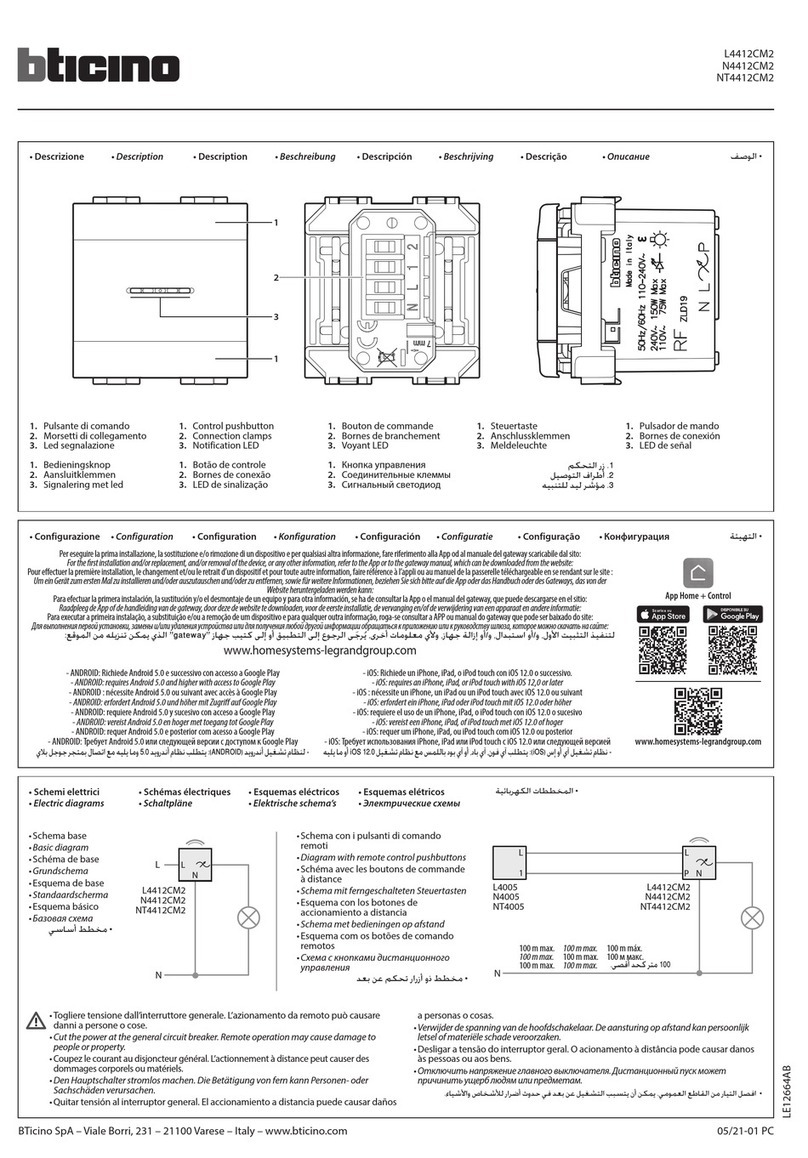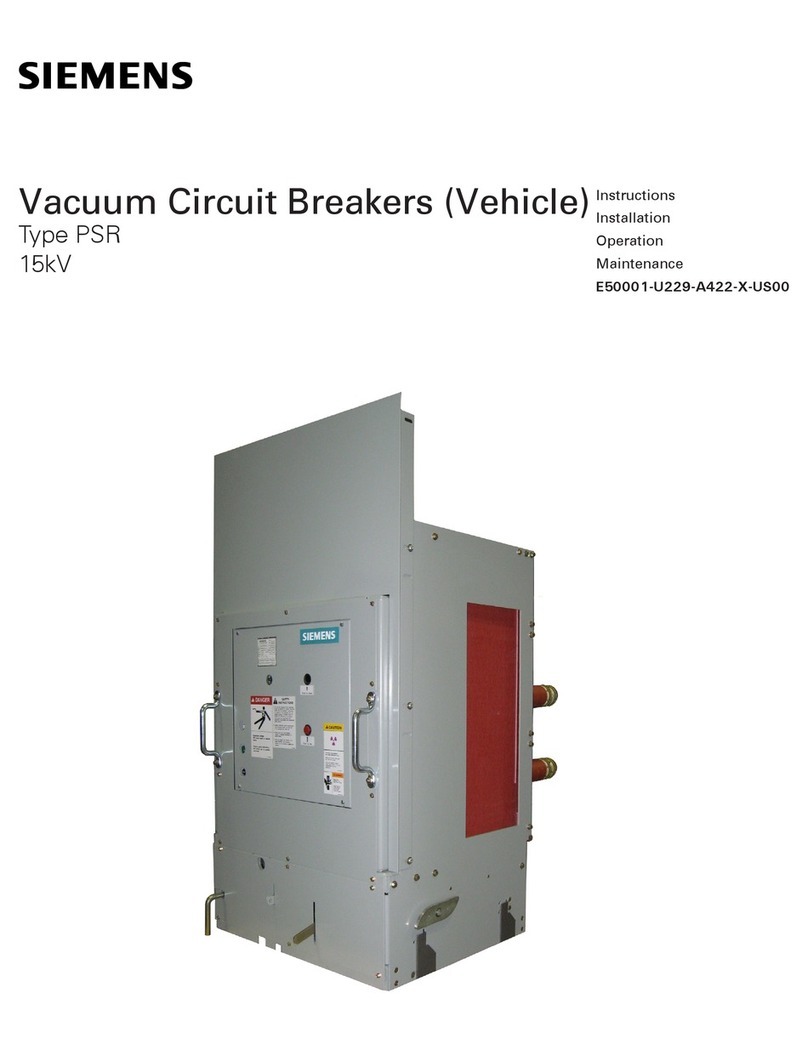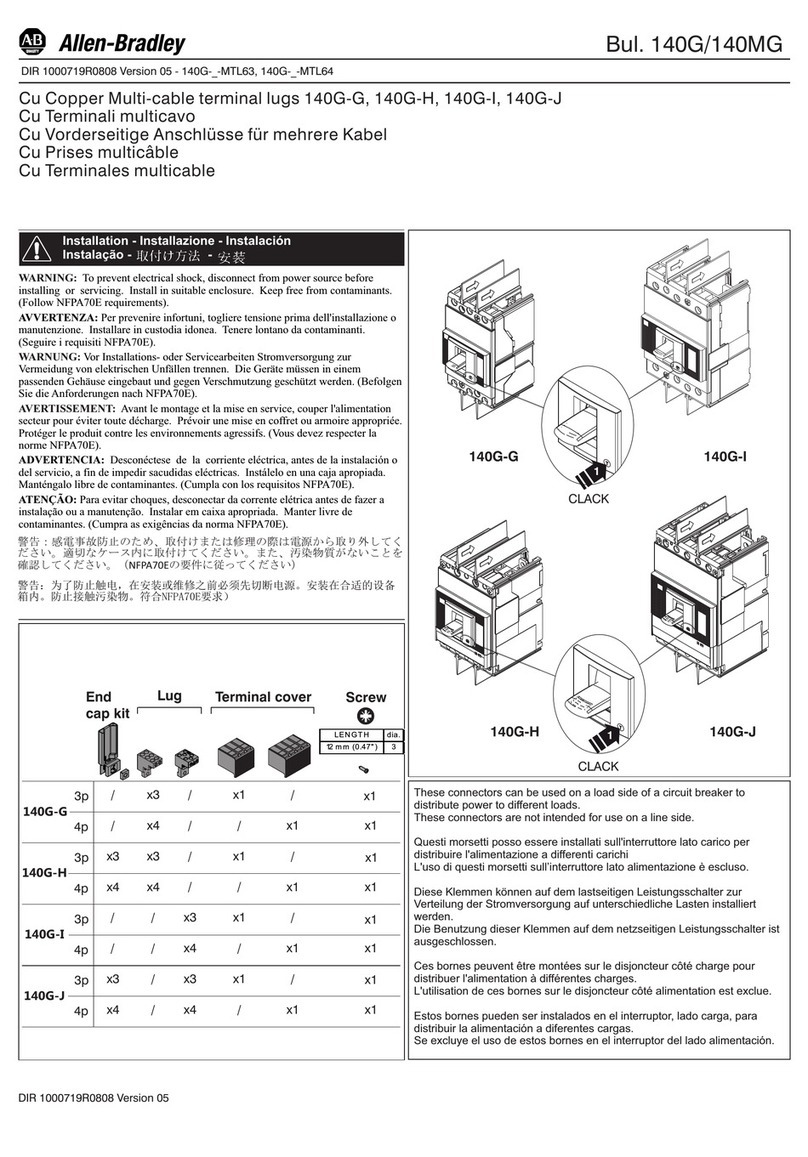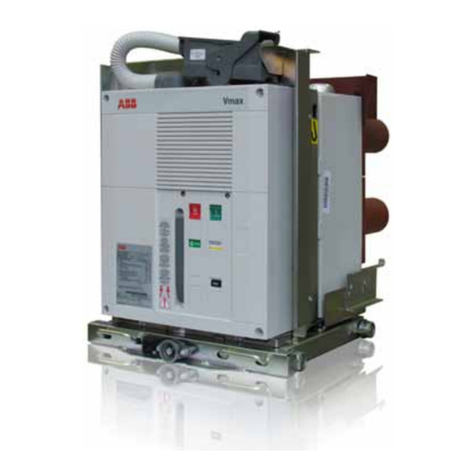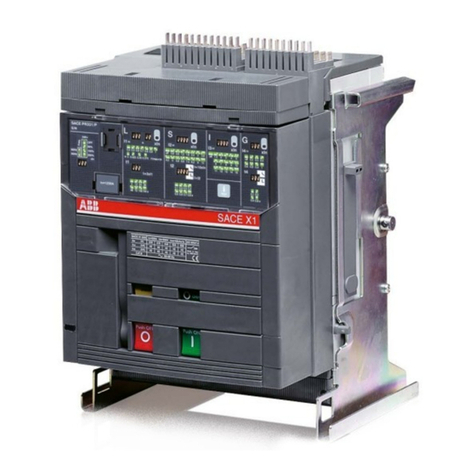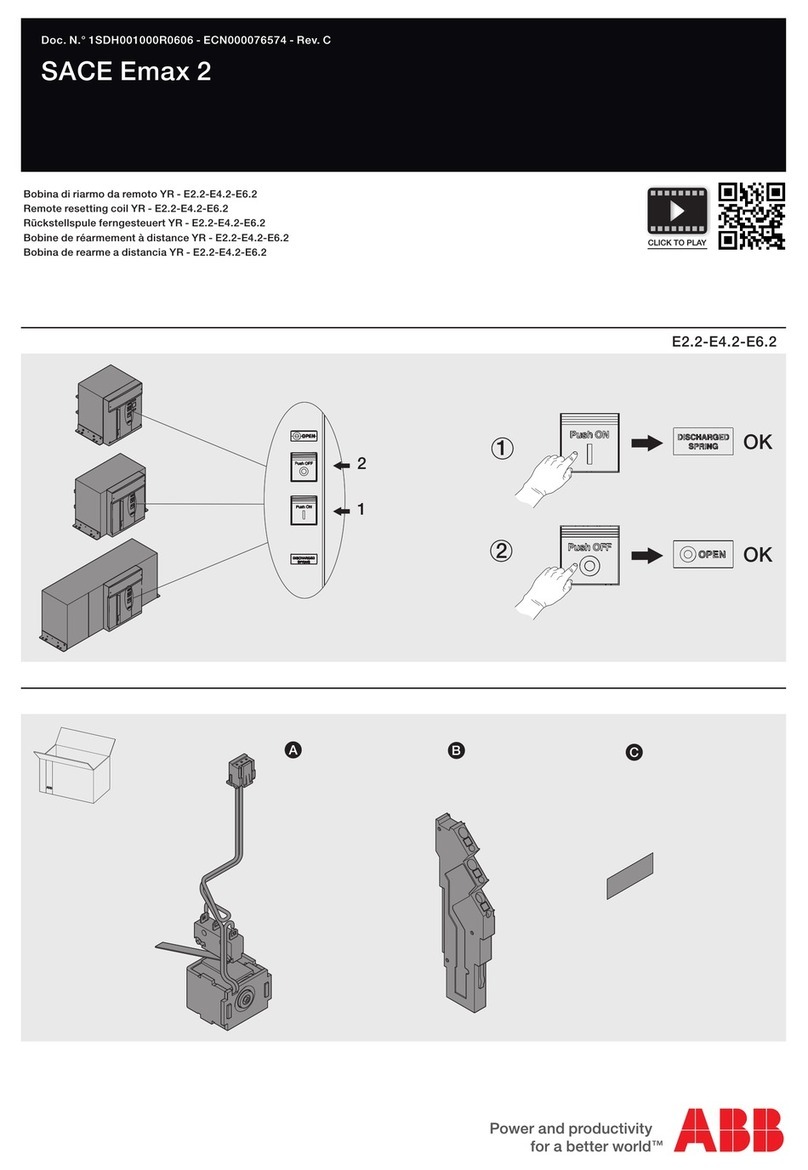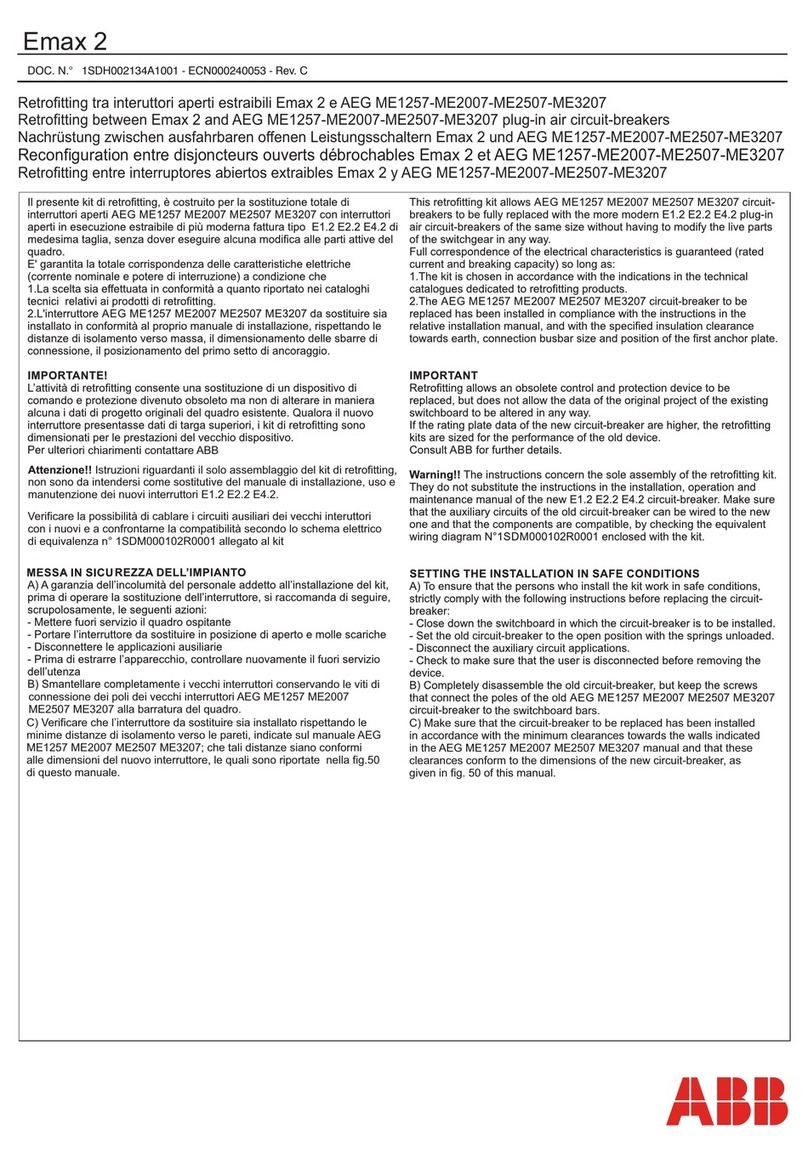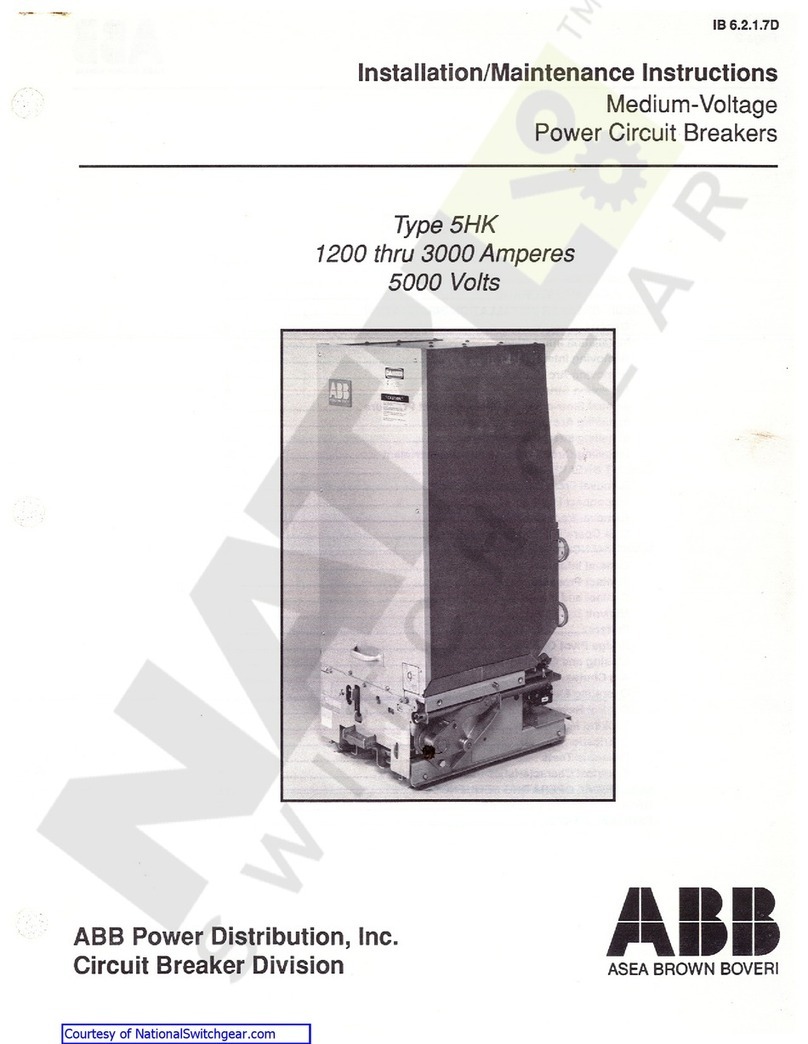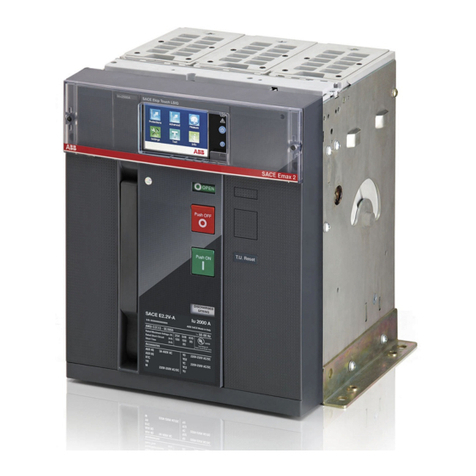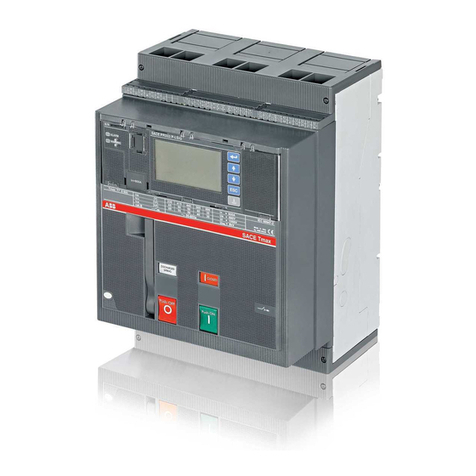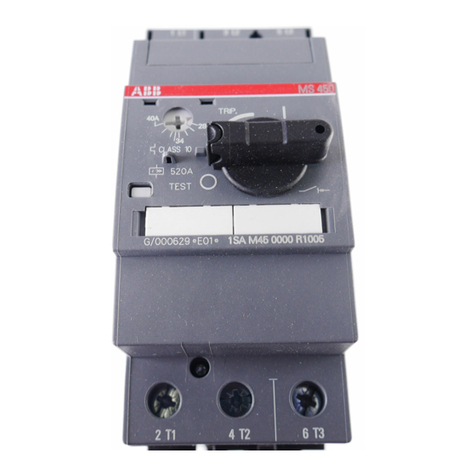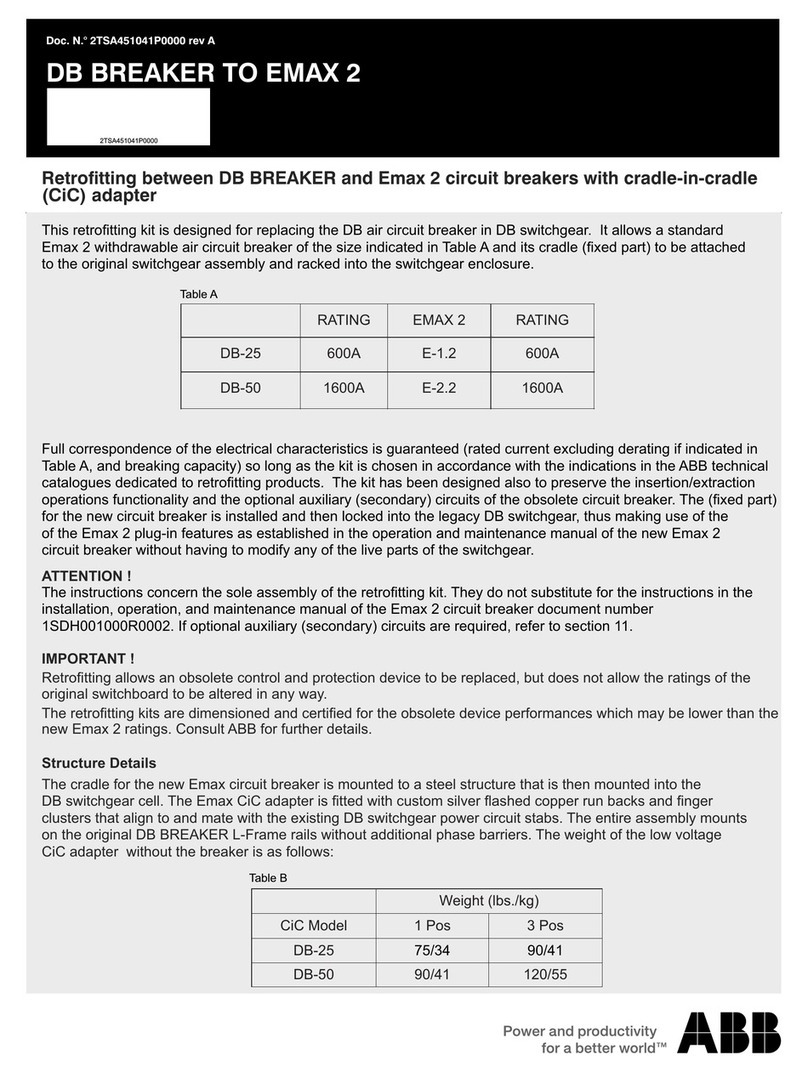
Trouble-Shooting
The following guide is provided for trouble-shooting and isolating common problems. It does not cover every possible Solution.
Contact Support Center at 800-843-3742 if any problem is not resolved by these procedures.
I. The Shunt Trip accessory
will not insert completely
into the breaker.
2. The breaker will not trip
when control power is
applied to the Shunt Trip.
3. The breaker closes
manually when the Shunt
Trip with Lockout is
energized.
4. The breaker will not close
manually when the Shunt
Trip or Shunt Trip with
Lockout control power is
removed.
5. The breaker fails to close
after control power is
removed from the Shunt Trip
with Lockout.
Possible Cause
The accessory is inserted
incorrectly.
The Shunt Trip is not energized.
The installed Shunt Trip has an
incorrect voltage rating.
The transformer connections are
incorrect.
The Shunt Trip connection is poor.
The breaker is not closed.
The Shunt Trip with Lockout solenoid
is not energized.
The Shunt Trip with Lockout control
power connection is poor.
The Shunt Trip or Shunt Trip with
Lockout control power is actually still
applied.
The breaker is already closed
The Shunt Trip with Lockout plunger
is not retracted.
Control power was not removed for a
minimum of 0.25 seconds before the
breaker was closed.
Corrective Action
Ensure that the accessow is inserted in the correct slot, as in Figure
2, and that the label is upright.
Check that Shunt Trip control power is applied at greater than 55%
of the rated ac voltage. Check that the accessory is completely
inserted; reinsert if necessary.
Check for the proper voltage rating on the Shunt Trip.
Ensure that steps 6, 7, and 8 in the Installation section have been
followed correctly.
Check that the Shunt Trip accessory is completely inserted. Check
that the Trip Unit is seated correctly. If the Trip Unit was removed to
set the switches, check that it has been correctly installed; remove
and reinstall, if necessary.
Note that an otherwise underpowered Trip Unit would be powered
up by an energized Shunt Trip accessory.
Verify that the breaker is closed.
Check that the Shunt Trip with Lockout control power is applied at
greater than 55% of the rated ac voltage. Check that the accessory
is completely inserted; re-insert if necessary.
Note that an otherwise underpowered Trip Unit is powered by an
energized Shunt Trip accessory.
Check that the Shunt Trip with Lockout accessory is completely
inserted.
Check that the Shunt Trip or Shunt Trip with Lockout control
power has been removed.
Check that the breaker is not closed; if so, open it and try again.
Remove the Shunt Trip with Lockout accessory. If the lockout
plunger protrudes out of the accessory, replace the accessory. If the
plunger does not protrude, reinsert the accessory, ensuring good
alignment of the accessory in the pocket.
Wait at least 0.25 seconds before closing the breaker after removing
control power from the Shunt Trip.
Symptom
1SQC930034M0201, GEH6519 December 2019
—
ABB Inc.
305 Gregson Drive
Cary, NC 27511.
electrification.us.abb.com
—
We reserve the right to make technical
changes or modify the contents of this
document without prior notice. With
regard to purchase orders, the agreed
particulars shall prevail. ABB Inc. does not
accept any responsibility whatsoever for
potential errors or possible lack of
information in this document.
We reserve all rights in this document and
in the subject matter and illustrations
contained therein. Any reproduction or
utilization of its contents – in whole or in
parts – is forbidden without prior written
consent of ABB Inc.
Copyright© 2019 ABB
All rights reserved
—
GE is a trademark of GE. Manufactured
by ABB Inc. under license from GE.
6.
7.
8.
If a MicroVersaTrip Plus or MicroVersaTrip PM Trip Unit
is installed, check that the Trip Unit display is active
(powered).
Remove power from the Shunt Trip with Lockout.
Attempt to close the breaker; it should close as normal.
After the breaker has tripped and with the power still
applied to the Shunt Trip with Lockout, attempt to
close the breaker. The breaker should not close nor
attempt to close.
If a Shunt Trip with Lockout has been installed, continue
with the following steps:
5.
4

